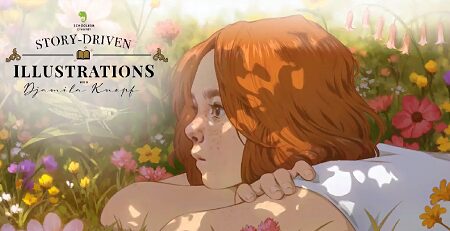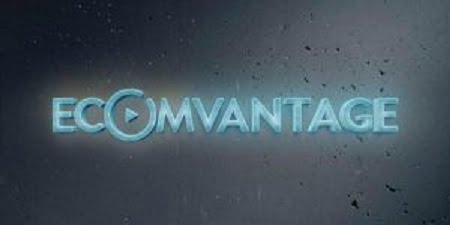
Schoolism – Story-Driven Illustrations with Djamila Knopf | 740.6 MB
Powerful art is usually a combination of technical skill and some undefinable lightning in a bottle that we often imagine just HAPPENS.
This class will touch on fundamentals such as composition, perspective, color, lighting, etc., but what we will really explore is that LIGHTNING part. While I believe there is not — and furthermore, CANNOT be — a formula for creating successful art, I DO believe my strategies for making illustrations that tell emotive stories is duplicatible and will get you most of the way to making art that connects powerfully with your audience.I will focus most of my time on topics such as ideation methods, the storytelling mindset, and visual emotion. Each lesson will have a demo to go with it so you can see my principles in action. And by doing the assignments, by the end of the class, you will have completed 3 story-driven illustrations, a variety of thumbnails, and detailed sketches.
I believe the best and most engaging art is that which tells a story and provokes an emotional response from the viewer. This is what I strive for every time I open a blank page and I hope my class will help you do the same.
I will focus most of my time on topics such as ideation methods, the storytelling mindset, and visual emotion. Each lesson will have a demo to go with it so you can see my principles in action. And by doing the assignments, by the end of the class, you will have completed 3 story-driven illustrations, a variety of thumbnails, and detailed sketches.
I believe the best and most engaging art is that which tells a story and provokes an emotional response from the viewer. This is what I strive for every time I open a blank page and I hope my class will help you do the same.
LESSON PLAN:
Lesson 1 – Ideation and Emotional Impact
In my first lesson, I will introduce myself and my work a little bit so you can see where my philosophy is coming from. I will then talk about ideation and demo my process for taming a blank page by effectively generating and developing good ideas. Using a demo covering 3 different ideas, we will look at how to tell a good story in an illustration and how to make an emotional impact.
Lesson 2 – Working with Reference
Using reference doesn’t mean copying something exactly. In this lesson, I talk about how to properly use reference to enhance richness and believability in your work while still allowing your style to shine through. My demo this week will show how I gather and organize my reference, the programs I use, and how I solve problems in the sketching phase.
Lesson 3 – Directing and Staging an Illustration
In this lesson, I will use a prompt, “girl in a coffee shop”, to demonstrate how I can tell different versions of the same story by changing the direction. We’ll discuss how you can fill the role of the director in your work, staging an image and applying certain dramatic principles, such as perspective, gesture, composition, etc.
Lesson 4 – Character and Space
In this lesson, I will design two different characters and their spaces, and stage the scenes to demonstrate my tips and philosophies on action, personality, body language, and effective design.
Lesson 5 – Color, Light, and Emotional Impact
We can dictate a lot of the emotional impact in our work through how we use color and light. In this lesson, I will do a demo showing how I pick colors in Photoshop, add lighting, and some of my tips, tricks, and shortcuts. We will examine color theory, basic lighting setups for different types of characters, handling light sources within the scene, and how to balance appeal vs. realism.
Lesson 6 – Kill Your Darlings
Inevitably, you will have an idea that you love but which simply doesn’t work in what you’re illustrating. As creators, scrapping an idea we like is possibly the hardest thing we have to do. But it’s also necessary. For my demo this week, I will deconstruct some of my own illustrations and talk about the edits I had to make throughout the creative process for the sake of clarity, readability, composition, and serving the overall story.
Lesson 7 – Finish
How do you know when an image is finished? In this lesson, I will demo the finishing touches that I often make, such as recognizing what I need to render and refine and what to leave loose and how to best do that. I will talk about keeping a good overview of a whole image and not losing focus, and how I use layer modes and adjustments to make final edits. We will look at contrast, edges, and details, painting different textures and surfaces, and maintaining balance.
Lesson 8 – What Next?
As creators, we are often in danger of being too close to our work to objectively evaluate it. As a result, we can routinely be too lenient or too harsh in critiquing our own art. For this reason, I use an evaluation checklist to be as fair and impartial as possible when judging if my work is good. In this final lesson, I will put my illustrations up against this toolkit and talk about what could have been improved.





